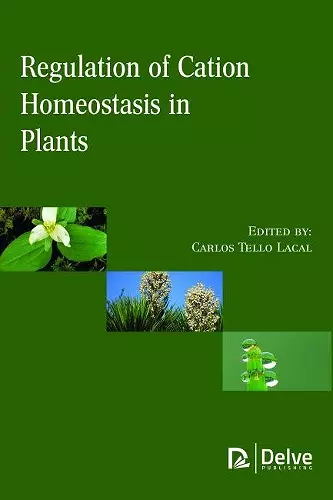Regulation of Cation Homeostasis in Plants
Format:Hardback
Publisher:Arcler Education Inc
Published:28th Feb '18
Should be back in stock very soon

Homeostasis can be defined in general terms as the active maintenance of the basal conditions of a system. The plant cell needs to control its cation homeostasis, that is to say tightly regulate the concentration of the main essential positively charged ions, such as K+, Ca2+ or Mg2+, as well as that of potentially toxic cations such as Na+, in order to maintain a balance allowing for the correct functioning of its metabolism, osmotic adjustment and nutrient acquisition. To this aim, plants employ a set of proteins including pumps, channels and transporters. This book contains a collection of peer-reviewed papers describing the main families of plant transporter proteins, with special emphasis on those regulating the uptake and distribution of K+ and its competitive inhibitor Na+. In Chapter number 1, the editor of the present book describes the main effects caused by salt stress and the main adaptive responses that plants have developed against it, in addition to providing an insight into the main families of cation pumps, channels and transporters. Chapter 2 presents a detailed overview of the main systems controlling the uptake of Na+ and K+ through the roots in both Arabidopsis and rice. Chapter 3 looks into the importance of K+ as a plant macronutrient with special emphasis on its role in protection against stress conditions. In turn, Chapter 4 briefly outlines the main proteins catalyzing sodium transport in plants. The isolation of a point mutation increasing the affinity of HAK5, the most important member of the KT/KUP/HAK family, for K+ while reducing that for Na+ and Cs+ is presented in Chapter 5. In Chapter 6, the main Arabidopsis voltage-dependent and voltage-independent K+ channels are studied. In vivo distribution, traffic and response to ion concentration of voltage-dependent channels is illustrated in Chapter 7 through the example of K+ outward GORK channel. The two families of non-selective cation channels, cyclic-nucleotide gated channels (CNGC) and glutamate receptors (GLR), are dealt with in Chapters 8 and 9, describing the salt-dependent regulation of the CNGC19/CNGC20 subfamily and the functional characterization of rice GLR, respectively. Chapter 10 reviews the HKT family of Na+ and K+ transporters. The following eight chapters explore the main families of plant cation/H+ antiporters. In Chapter 11, the latest findings on the phylogenetic analysis...
ISBN: 9781773610436
Dimensions: unknown
Weight: unknown
520 pages